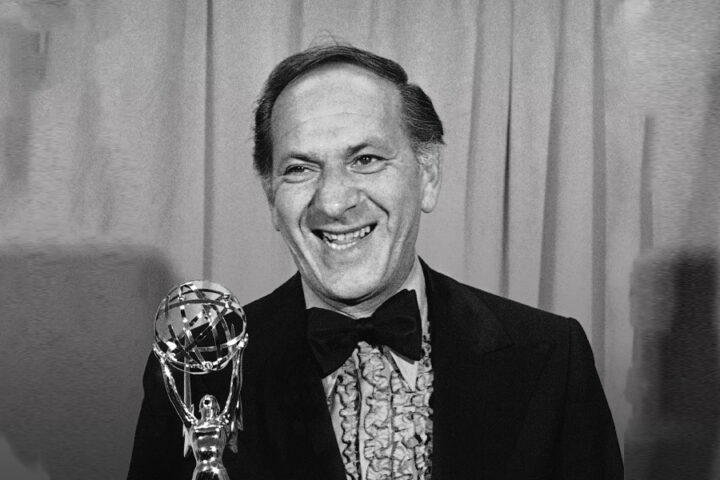In today’s fast-paced world, where immediacy seems to be everything, there’s an undervalued strength in learning how to sit back and observe. While modern culture often encourages quick responses and knee-jerk reactions, there is a distinct and powerful calm in taking a step back, observing, and thoughtfully processing the world around us. The ability to be present, yet quiet, is not a sign of indifference or passivity; rather, it’s a skill that can lead to better decision-making, deeper understanding, and personal growth.
The Power of Pausing
Taking time to pause before reacting allows us to gain control over our impulses and emotions. When we respond without thinking, our reactions can often be influenced by temporary emotions or biases. Observing first, however, gives us a clearer view of situations, people, and our own feelings. This pause can transform what might have been an impulsive reaction into a response that reflects our true intentions.
By sitting back and observing, we invite clarity into our lives. Observing doesn’t mean ignoring or neglecting it means allowing ourselves a moment to breathe, to understand what is happening around us, and to find a balanced way to respond if needed. This practice is especially beneficial in stressful or tense situations, where emotions might otherwise cloud our judgment.
Observation as a Tool for Self-Reflection
Observation can also become a tool for self-reflection, helping us learn more about ourselves and our habits. Through mindful observation, we can notice patterns in our thoughts, feelings, and reactions. When we become aware of these patterns, we gain insights into our own character and values, which can guide our responses in ways that are aligned with who we truly are.
For instance, when facing criticism, the immediate response might be to defend ourselves or justify our actions. By sitting back and observing our reaction, we might realize that the need to defend comes from a place of insecurity or ego. Recognizing this, we can work toward responding with confidence and humility, rather than defensiveness. Such introspection allows us to grow, making each interaction a learning opportunity.

Building Stronger Relationships Through Observation
In relationships, personal or professional, the ability to observe before reacting is an invaluable skill. Often, we jump to conclusions based on assumptions rather than what is truly being communicated. By listening carefully and observing the other person, we gain a fuller understanding of their perspective, intentions, and emotions. This reduces misunderstandings and allows us to respond with empathy.
Observation also improves our ability to read non-verbal cues, which play a significant role in communication. A person’s tone of voice, body language, and facial expressions can reveal more than their words alone. When we take time to observe these cues, we are better equipped to respond in ways that are both compassionate and constructive, enhancing the trust and respect in our relationships.
Observation as a Path to Emotional Intelligence
Emotional intelligence, often called EQ, is the ability to understand and manage our emotions and those of others. Observation is a foundational skill for developing EQ. By observing ourselves, we become more aware of our emotional triggers, strengths, and areas for improvement. This self-awareness helps us handle stressful situations with composure and allows us to empathize with others more deeply.
Moreover, observing without reacting immediately can help us avoid escalating conflicts. When we understand that our initial emotions don’t always reflect the bigger picture, we gain the capacity to navigate difficult interactions more effectively. People with high emotional intelligence often find themselves in a better position to lead, inspire, and connect with others.
Cultivating a Mindful Approach to Life
Mindfulness, the practice of being present and fully engaged with the current moment, aligns naturally with observation. When we observe mindfully, we immerse ourselves in the present without judgment, simply witnessing what is happening. This approach helps reduce stress, as it prevents us from dwelling on the past or worrying about the future.
Mindful observation can be practiced in everyday activities, whether it’s listening to a friend, enjoying a meal, or even going for a walk. By being fully present in these moments, we learn to appreciate life more deeply, experiencing it with a sense of curiosity and wonder. This not only enriches our lives but also brings a calm resilience, allowing us to face challenges with a clear and open mind.
How Observing Enhances Professional Success
In professional settings, the ability to sit back and observe before responding is often a hallmark of strong leadership. Leaders who observe more and react less are better able to gauge team dynamics, assess strengths and weaknesses, and make informed decisions. Observational skills enable leaders to listen to feedback, identify potential challenges, and recognize opportunities.
This quality is particularly useful in problem-solving. Instead of rushing to fix a problem immediately, effective leaders observe the situation, gathering all relevant information and viewpoints before making a move. This approach not only leads to better solutions but also builds a culture of patience, respect, and careful decision-making within teams.
Finding Balance: When to Act and When to Observe
While observation is powerful, it’s essential to know when to act. There are situations that call for decisive action, and understanding when to move from observation to action is key. This balance is learned over time as we become more attuned to our intuition and understanding of situations.
To strike this balance, ask yourself questions like:
- What are the possible consequences of acting now versus observing?
- Do I fully understand the situation, or is more information needed?
- Is my reaction coming from a place of fear, frustration, or ego?
These questions can help clarify when to pause and when to proceed, leading to responses that are thoughtful rather than impulsive.
Practical Tips for Embracing Observation
- Practice Active Listening: When in conversation, focus entirely on the speaker. Notice their words, tone, and expressions without planning your response. This cultivates patience and deepens your understanding.
- Reflect Before Responding: If you feel a strong urge to react, give yourself a moment to process. Count to ten, take a few deep breaths, or excuse yourself briefly if needed. This gives your mind a chance to evaluate the situation.
- Journal Your Observations: At the end of each day, jot down moments where you observed without reacting. Reflect on what you noticed and how it felt. Over time, you may find yourself more naturally inclined to observe in real-time.
- Set Boundaries with Technology: Our digital devices encourage instant reactions, which can make observation more challenging. Set aside specific times to check your phone or respond to emails, giving yourself space to think before replying.
- Practice Patience in Small Ways: Deliberately slow down in everyday activities, such as drinking your coffee, waiting in line, or taking a walk. These small practices reinforce the habit of observation and build patience over time.
Conclusion
In a world that values quick responses and constant action, learning to sit back and observe is a rare but invaluable skill. It is a practice that cultivates patience, self-awareness, emotional intelligence, and a sense of calm resilience. Observation enables us to better understand ourselves and others, leading to more thoughtful and meaningful interactions.
By embracing observation, we gain control over our impulses and reactions, allowing us to approach life with clarity and balance. Whether in our personal relationships, professional lives, or daily routines, the power of sitting back and observing cannot be understated. This skill not only enriches our experiences but also brings depth and intention to the way we engage with the world around us.






